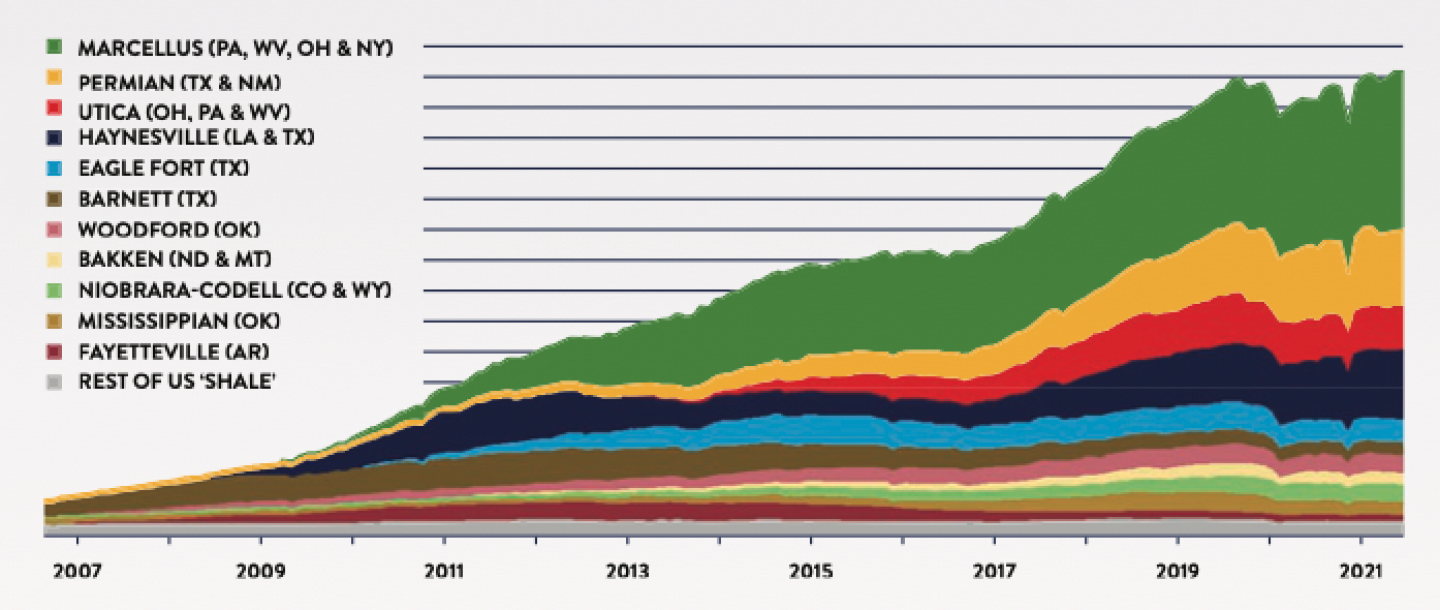Texas LNG: Poised to Meet the World's Energy & Climate Needs
Bottom Line: Made possible by the "shale revolution" since 2008, an abundance of natural gas and surging production has turned the U.S. into one of the world’s largest exporters of the fuel just over the past five years (via cargo shipments of liquefied natural gas, "LNG"). This is centered in Texas, and the Gulf of Mexico is poised to help meet the rapidly rising global demand for gas. Not just an economic boon for the U.S., but our ability to export LNG is a climate imperative: fast-growing Asia is overwhelmingly coal-based, and gas emits 50% less CO2 than coal. U.S. LNG can also help allies in Europe lower their worsening reliance on energy from politically risky Russia. In a strongly partisan and divided Congress, it is imperative to know that U.S. LNG exports have enjoyed bipartisan support for all of these reasons.
Over the past dozen years, we have seen an evolving combination of horizontal drilling and hydraulic fracturing (“fracking”) technologies in the U.S. natural gas production business.
U.S. gas output has thereby jumped 75% to nearly 100 billion cubic feet per day (Bcf/d).
In turn, this has transformed the U.S. into a major exporter of natural gas, with a growing portion of that coming from cargo shipments of liquefied natural gas (LNG) to fuel-hungry regions around the world, namely in Asia, Europe, and Latin America.
The U.S. currently has seven operational LNG export facilities with a takeaway capacity of 11.7 Bcf/d of gas – with 90% of that located in Texas and Louisiana.
Many more LNG export terminals are coming: in a wave of new projects hoping to capitalize on high global gas prices, the U.S. could be adding as many as seven more export terminals by the end of 2024.
North America, led by the U.S., is expected to contribute 75% of total global LNG growth by 2024 with the development and expansion of new infrastructure.
With most of the supply of natural gas coming out of the Gulf Coast and the bulk of the export facilities being built there, that means Texas will play an even more important role in supplying the energy that will help global economic growth and reduce energy poverty.
But beyond that, LNG exports have had bipartisan support because they can help fight climate change by lowering the use of, and emissions from, coal, still the world’s primary source of electricity.
When combusted, natural gas emits 50% less CO2 than coal, making the evolution from coal to gas an essential component of the global fight against climate change.
The rising Asian economies in particular desire more natural gas to clear the hazy city skies that have come from over-relying on high-emission coal.
Further, natural gas is the go-to backup resource to compensate for the natural intermittency of wind and solar power.
It is gas that fills-in when "the wind doesn't blow" and "the sun doesn't shine."
This explains why many forecasts project that natural gas and renewables combined make up nearly three-quarters of total world energy growth by 2040.
From a political perspective, U.S. LNG will help lower the stranglehold that risky Russia and the OPEC nations have had on the world’s globalizing gas market.
Both Democrats and Republicans know it: Texas LNG is a win-win-win.
Read the full report here.
The Huge Growth in U.S. Natural Gas Production (now ~100 Bcf/d)

Findings:
- The shale boom has turned the U.S. into a natural gas producing juggernaut, and this has helped make us a leading exporter of liquefied natural gas.
- Exports have bipartisan support because they can help drastically lower CO2 emissions from coal to fight climate change, which is still especially dominant in fast-growing, energy-deprived Asia.
- Gas is the essential backup resource to give naturally intermittent wind and solar power a commercial opportunity to compete.
- World energy consumption is set to increase a staggering 50% between 2020 and 2050, and under almost every future scenario depicting the energy mix, natural gas remains a foundational fuel.
Read the full report here.




